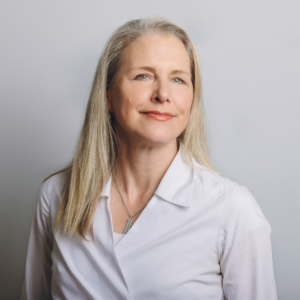Reflecting on being a leader over the global COVID-19 crisis
Recently I was asked by a friend and former colleague if I could summarize what being a leader has been like over the global COVID-19 crisis. After my initial, blatant response that I can’t repeat here, I realized that my reactions and actions over the past 20 months were nearly a textbook journey of the Kubler-Ross Change Curve. See if you can relate:

Early March 2020: Shock
While the first confirmed case COVID-19 was reported in late January, it wasn’t until early March that daily news reports of the spread and fatalities became a reality. And, like the quintessential deer in the headlights, this sent me into a freeze mode. What the…? What was I supposed to do? Should I be going places? Seeing people? Sending our consultants on the road? I had no answers and didn’t even know the right questions to ask. My actions: Continuing to operate our business as if nothing was different.
Mid-March 2020: Denial
I know that I’m not the only one who undeniably believed that the so-called “Corona Crisis” wasn’t going to last long. “People are completely freaking out for nothing,” I told a colleague, “This will be over by June—mark my word.” My actions: Doing the same things I always did, hoping for the best.
Late March 2020 : Frustration
When my prayers (above) did not get answered to my liking, I was really pissed off. Why was this happening to me? Didn’t I have enough challenges already thrown my way as a new CEO? We had just finished a great year of performance, had some significant client work booked for 2020, and all of our clients were postponing their work for the foreseeable future. My actions: Moping, blaming myself for not being better prepared for this, wondering how I could be so stupid.
April 2020: Depression
Thankfully, I didn’t get to “hang out” in this stage for very long. During a meeting in early April with my Senior Leadership Team, it became evident that we had two distinct choices: 1) Continue to hope that things got back to the way things were, and drastically cut costs in the short-term, or 2) Try something new. I have to admit, I was feeling the pure weight of this decision and its impact on our company. If we chose #2 and were wrong, we’d end up having to cut costs (and people) anyway. But, at least if we DID try something new and failed, we’d “go out swinging.” We decided to buck the safe choice and move forward with a completely different approach to our business: virtual leadership development. My actions: While I was initially very sad and hopeless, then extremely fearful, I eventually allowed myself to wonder, “how might we..?”
April 2020: Experiment
One thing I have to say about our team. They’re fiercely dedicated. Once we made the decision to put our bets on changing our business to a virtual delivery model, we were all in. Our Consulting Team was able to design, develop and do a beta launch of our first-ever Virtually Impossible leadership development program in a record 45 days. We then went on to deliver a full pilot program and received sincere and abundant accolades for the unique, experiential approach of our virtual programs. My actions: Support the team with what they needed to be successful, and get out of their way.
September 2020 : Decision
At this point in the year, I had pretty much given up hope that the global pandemic was going to end anytime soon. And, while a handful of our clients were open to having us do small, in-person workshops for them, the vast majority had no interest of bringing together their people together in a physical location. We had to think quickly, as the end of the year was approaching and we needed a plan for how we were going to continue to deliver our custom programs to our clients throughout North and South America. Lucky for us, we have amazing clients, all of whom were open to experiencing first-hand what our virtual programs could do. Within a matter of weeks, every one of our clients had agreed to have us redesign their leadership development programs for virtual delivery. For the first time since late February, we were confident about our continued success as a company. My actions: Planning and organizing, with the SLT, for the continuation and build-out of virtual programming as a permanent solution for our company.
January 2021: Integration
Early this year our SLT began to update our 3-year strategic plan. We recognized right off the bat that our entire strategy had to be adaptive for more change, and that we as leaders had to be resilient and adaptive as well. As a company we are stronger and more agile as a result of working through the changes of COVID, and we will continue to build our brand on our ability to deliver excellent programming in both virtual and in-person environments. My actions: Moving forward, I know that it is human nature to move through the Change Curve at some pace during times of immense uncertainty. However, by recognizing where I am at on that Curve, I can quickly identify what I might be doing that is not helping myself or my team.
I’d love to hear your experience with the Change Curve—can you relate to my story?
Written by: Susan Eick, Refinery CEO


Recent Comments